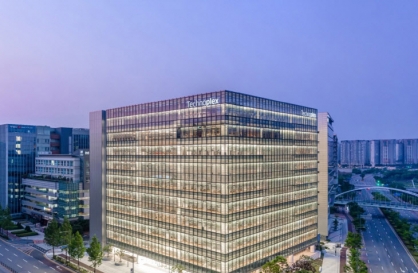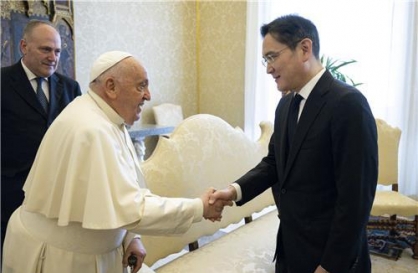BELGRADE, Serbia ― Most Americans, myself included, know very little about the Balkans ― except, perhaps, that last week’s men’s U.S. Open champ, Novak Djokovic, is from Serbia. I’m visiting now, and the headline is: Countries in the Balkans are groping their way out of centuries of bloodshed and oppression and struggling to build a path to internal stability and regional security.
On Sept. 12, I stood in the cathedral of St. Phillip and Jacob in Vukovar, a Croatian city on the banks of the Danube that had been brutally destroyed by the Serbian army in 1991. On Tuesday, I walked through the old Kalemegdan Fortress in Belgrade, Serbia, that overlooks the juncture of the Sava and Danube rivers. That fort has changed hands countless times ― usually in war, sometimes in comedy, as when the Austrians in the 18th century rebuilt it and then handed it over to the Turks, from whom they had just taken it, as part of a wider rearrangement of borders.
Armies and empires, kings and generals, bloodshed and destruction, have washed back and forth over these lands in cycles, like tides and the seasons. The wars were usually cruel, the conquerors heavy-handed. And intra-Balkan violence was often worse.
In Vukovar in 1991, the Serbs entered the city hospital and massacred several hundred patients and staff. Mass uprooting and migration were frequent and chaotic, and thus many localities have ethnically mixed populations.
In peacetime or under the iron hand of a dictator, these different ethnic groups managed to cooperate and exhibited a measure of religious tolerance. There was even some intermarriage. But the practice of uneasy accommodation between ethnic and religious groups was usually layered over bitter resentment and the smoldering memory of past wrongs. And this explosive tinder often burst into flames of violence, civil war or genocide when old ties were loosened, often suddenly, in a context that had none of the institutional restraints of enduring constitutional structures.
The Turks were finally expelled for good from Belgrade and most of the rest of the Balkans by the end of the 19th century. Countries that had been tossed back and forth among competing empires gradually oriented themselves to western Europe. With that orientation came the 20th century and new occupiers, two World Wars and the Holocaust. Then came a long cold war during which a forceful dictator, Marshall Tito, managed skillfully to hold what was then Yugoslavia together and steer a neutral course between the Soviet Union and the West.
The landscapes here are dotted with churches built on the ruins of mosques that were themselves built upon the ruins of churches. The boulevards, many of whose buildings were scarred by cannonballs, are lined by both royal palaces and socialist planning ministries ― and more recently, McDonalds. But gradually, despite the violence, genocide and civil wars of the 1990s, the countries here are exploring the road toward unions of choice, instead of being forced by conquest into empires of occupation.
Slovenia has joined the European Union, and other Balkan states, with Croatia and Serbia in the lead, have made application or are considering doing so.
This is a complicated part of the world about whose history most Americans, understandably, know little. But in the Balkans, America ― the idea of America, the dream of America ― has for a long time been a steady beacon and a powerful inspiration. It’s encouraging to learn that a part of the world with as troubled a history as this one is moving away from its violent past, even if the road isn’t straight or easy.
And it gives pause to an American visitor to see that what flickers with uncertainty here now is that dream of America. A Serbian newsmagazine offered as its cover story last week: “Where Is America Going?”
By Peter Goldmark
Peter Goldmark, a former publisher of the International Herald Tribune, headed the climate program at the Environmental Defense Fund. He wrote this for Newsday. ― Ed.
(Newsday)
(MCT Information Services)
On Sept. 12, I stood in the cathedral of St. Phillip and Jacob in Vukovar, a Croatian city on the banks of the Danube that had been brutally destroyed by the Serbian army in 1991. On Tuesday, I walked through the old Kalemegdan Fortress in Belgrade, Serbia, that overlooks the juncture of the Sava and Danube rivers. That fort has changed hands countless times ― usually in war, sometimes in comedy, as when the Austrians in the 18th century rebuilt it and then handed it over to the Turks, from whom they had just taken it, as part of a wider rearrangement of borders.
Armies and empires, kings and generals, bloodshed and destruction, have washed back and forth over these lands in cycles, like tides and the seasons. The wars were usually cruel, the conquerors heavy-handed. And intra-Balkan violence was often worse.
In Vukovar in 1991, the Serbs entered the city hospital and massacred several hundred patients and staff. Mass uprooting and migration were frequent and chaotic, and thus many localities have ethnically mixed populations.
In peacetime or under the iron hand of a dictator, these different ethnic groups managed to cooperate and exhibited a measure of religious tolerance. There was even some intermarriage. But the practice of uneasy accommodation between ethnic and religious groups was usually layered over bitter resentment and the smoldering memory of past wrongs. And this explosive tinder often burst into flames of violence, civil war or genocide when old ties were loosened, often suddenly, in a context that had none of the institutional restraints of enduring constitutional structures.
The Turks were finally expelled for good from Belgrade and most of the rest of the Balkans by the end of the 19th century. Countries that had been tossed back and forth among competing empires gradually oriented themselves to western Europe. With that orientation came the 20th century and new occupiers, two World Wars and the Holocaust. Then came a long cold war during which a forceful dictator, Marshall Tito, managed skillfully to hold what was then Yugoslavia together and steer a neutral course between the Soviet Union and the West.
The landscapes here are dotted with churches built on the ruins of mosques that were themselves built upon the ruins of churches. The boulevards, many of whose buildings were scarred by cannonballs, are lined by both royal palaces and socialist planning ministries ― and more recently, McDonalds. But gradually, despite the violence, genocide and civil wars of the 1990s, the countries here are exploring the road toward unions of choice, instead of being forced by conquest into empires of occupation.
Slovenia has joined the European Union, and other Balkan states, with Croatia and Serbia in the lead, have made application or are considering doing so.
This is a complicated part of the world about whose history most Americans, understandably, know little. But in the Balkans, America ― the idea of America, the dream of America ― has for a long time been a steady beacon and a powerful inspiration. It’s encouraging to learn that a part of the world with as troubled a history as this one is moving away from its violent past, even if the road isn’t straight or easy.
And it gives pause to an American visitor to see that what flickers with uncertainty here now is that dream of America. A Serbian newsmagazine offered as its cover story last week: “Where Is America Going?”
By Peter Goldmark
Peter Goldmark, a former publisher of the International Herald Tribune, headed the climate program at the Environmental Defense Fund. He wrote this for Newsday. ― Ed.
(Newsday)
(MCT Information Services)






![[Weekender] Korean psyche untangled: Musok](http://res.heraldm.com/phpwas/restmb_idxmake.php?idx=644&simg=/content/image/2024/05/02/20240502050841_0.jpg&u=)



![[Herald Interview] ‘Time to Be Strong’ follows retired K-pop idols’ self-discovery](http://res.heraldm.com/phpwas/restmb_idxmake.php?idx=644&simg=/content/image/2024/05/03/20240503050550_0.jpg&u=)






![[Herald Interview] Director of 'Goodbye Earth' aimed to ask how we would face apocalypse](http://res.heraldm.com/phpwas/restmb_idxmake.php?idx=652&simg=/content/image/2024/05/03/20240503050732_0.jpg&u=)
